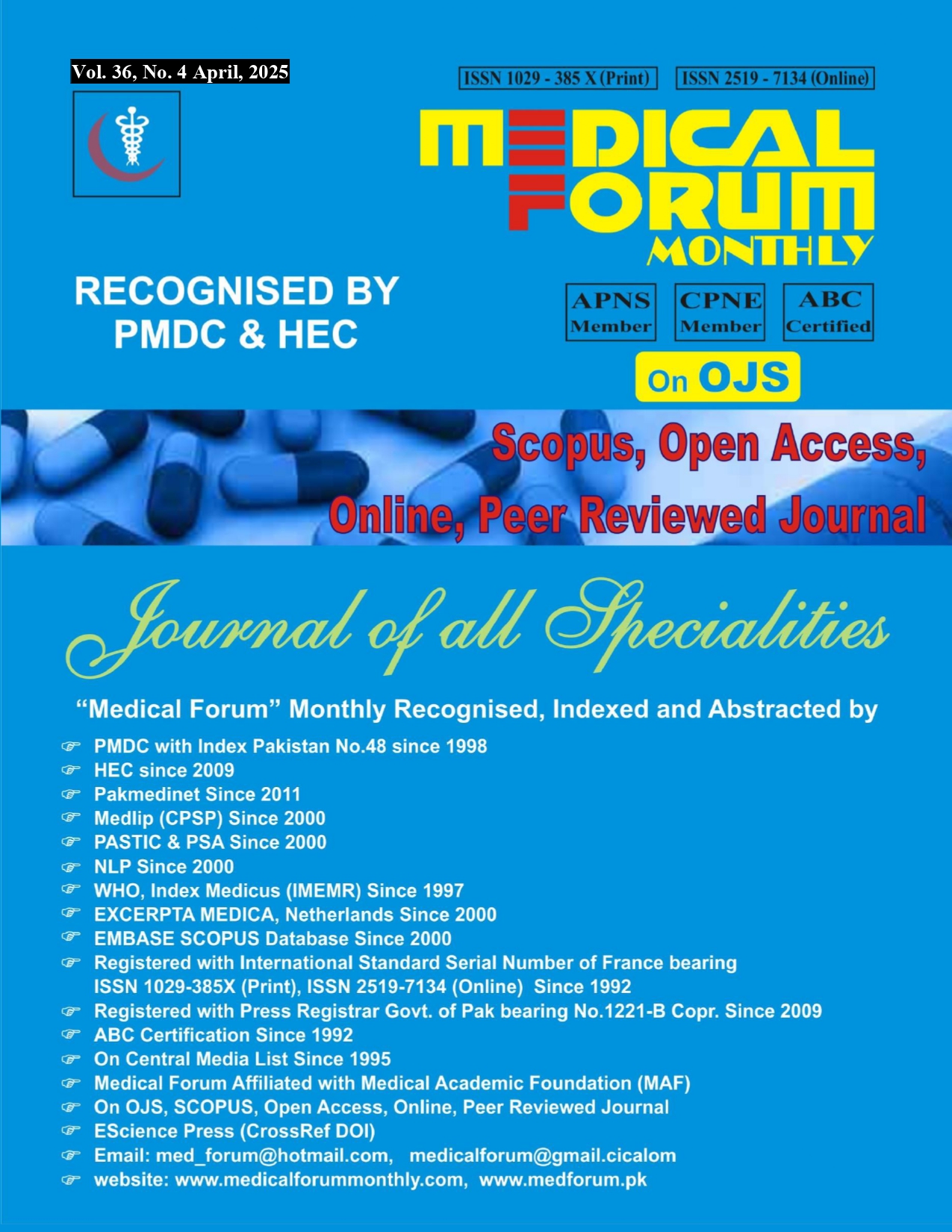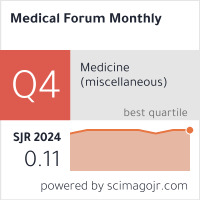Retrospective Analysis to Compare Prognostic Outcomes of Endovascular vs Open Bypass in Critically Limb Threatening Ischemia (CLTI); A Single Centre Cohort
DOI:
https://doi.org/10.60110/medforum.360413Keywords:
Critical Limb threatening Ischemia, peripheral arterial disease, open vs. endovascular, outcomes, amputation free survival.Abstract
Objective: This study aims to compare the outcomes of open vs. endovascular revascularization.
Study Design: A retrospective observational study
Place and Duration of Study: This study was conducted at the Department of Vascular and Endovascular Surgery, Shaheed Mohtarma Benazir Bhutto Institute of trauma, Karachi from January 2021 to November 2023.
Methods: A retrospective observational study conducted during 4 years period in all patients of CLTI underwent revascularization. primary patency at 1 year, survival for 6 months, amputation free survival for 1 year, and ambulatory status and limb salvage rates were examined.
Results: We analyzed a final sample size of 247 patients with 80.5% (n=207) males and a mean age of 55.85 years. 64.2% (n=165) of our patients were diabetic, 27.9% (n=123) had known hypertension, 28% (n=72) had ischemic heart disease and 6.6% (n=17) had had strokes. The salvage rate post-intervention varied for open bypass at 80.45%
(n=107), endovascular approach at 76.92% (n=90) and hybrid procedures at 71.42% (n=5). The rate of major amputations was found to be 21.8%(n=56). At 6 months, 76.6% of the patients were still alive 68.48% did not undergo any major amputations.
Conclusion: Our study demonstrates that both endovascular and open bypass approaches achieve satisfactory and equivalent limb salvage and patency rates in patients with CLTI. Further high-quality research is needed to establish evidence-based guidelines, ultimately improving outcomes in this high-risk population.
































 This work is licensed under a
This work is licensed under a 